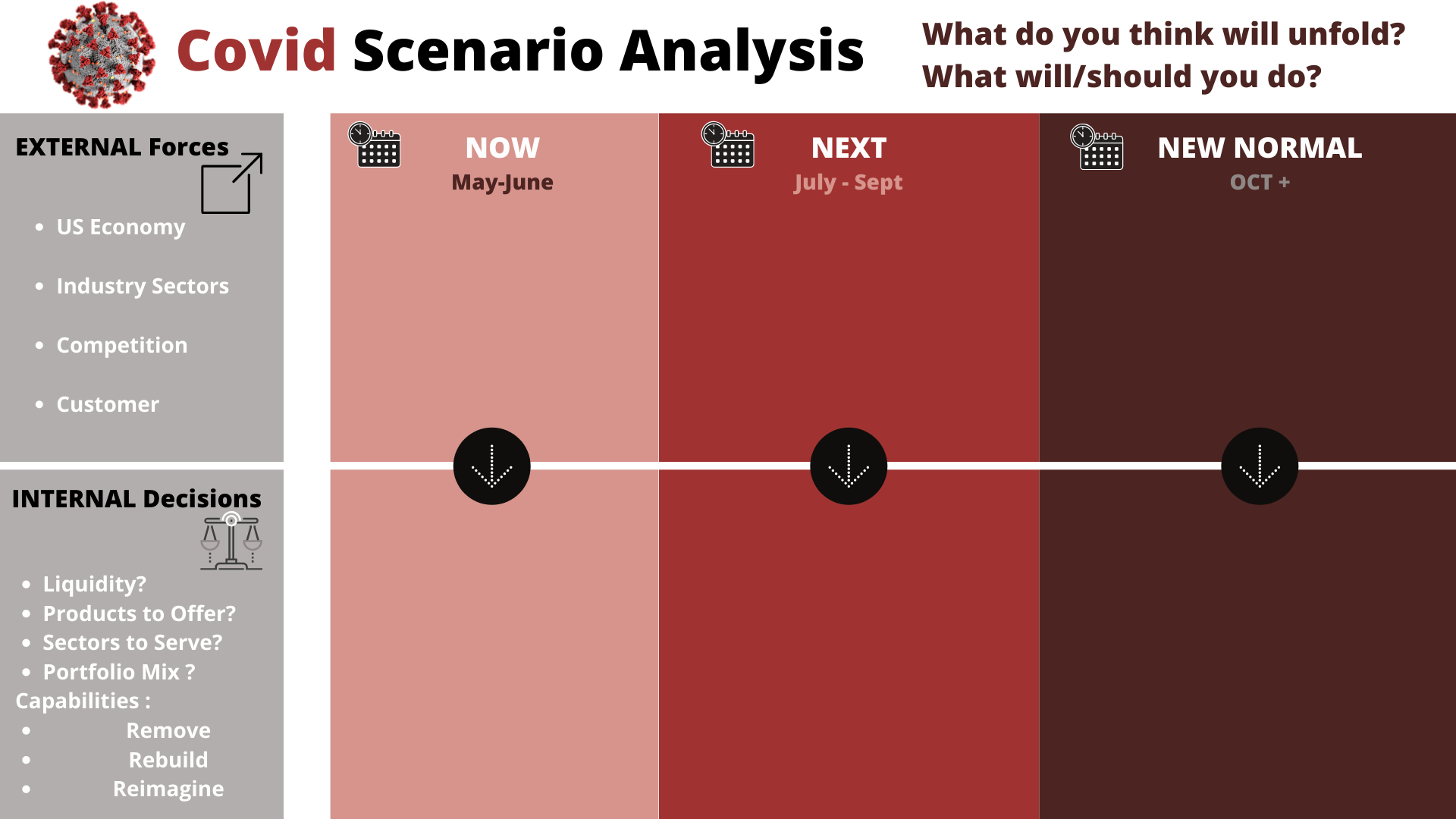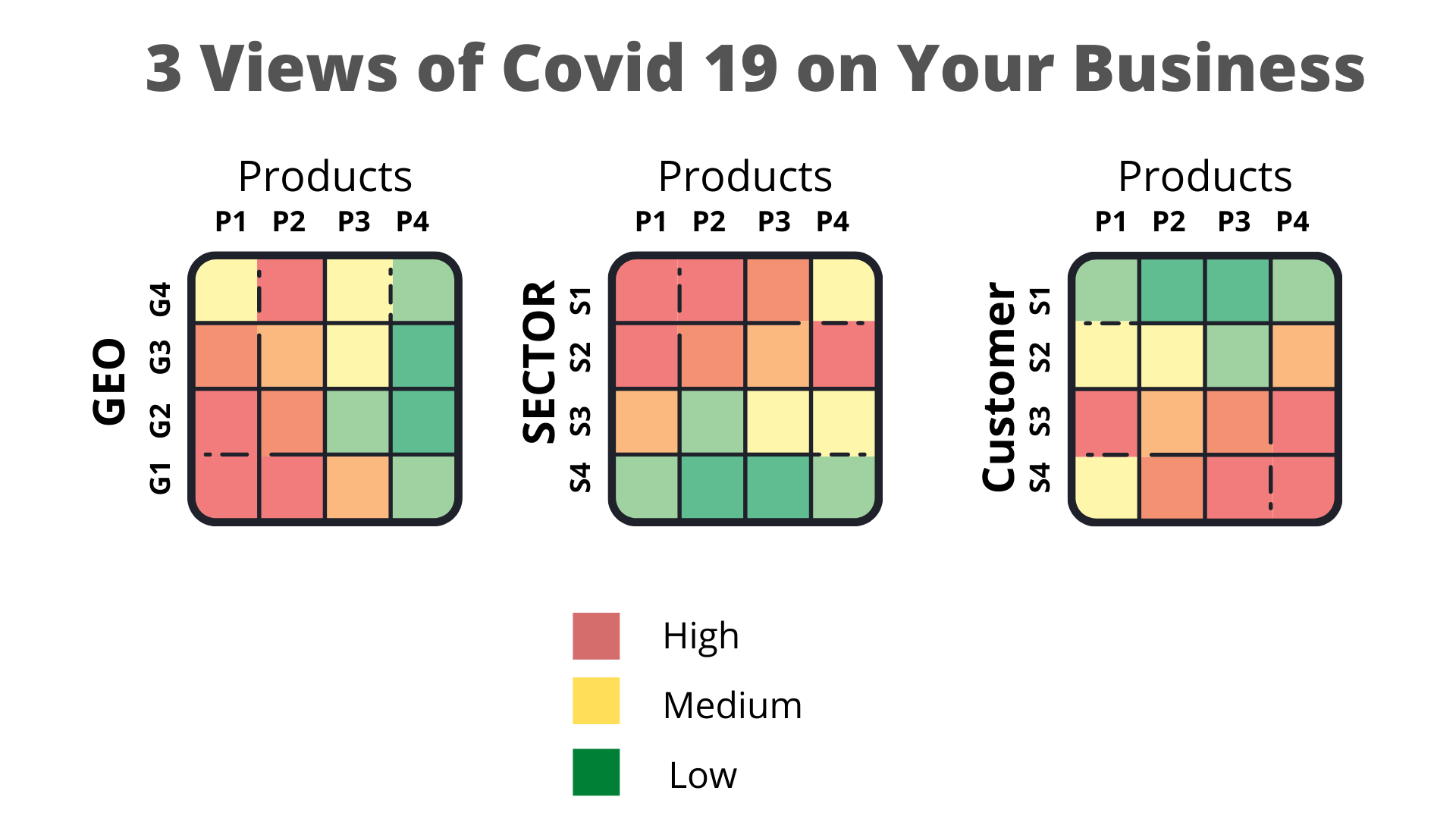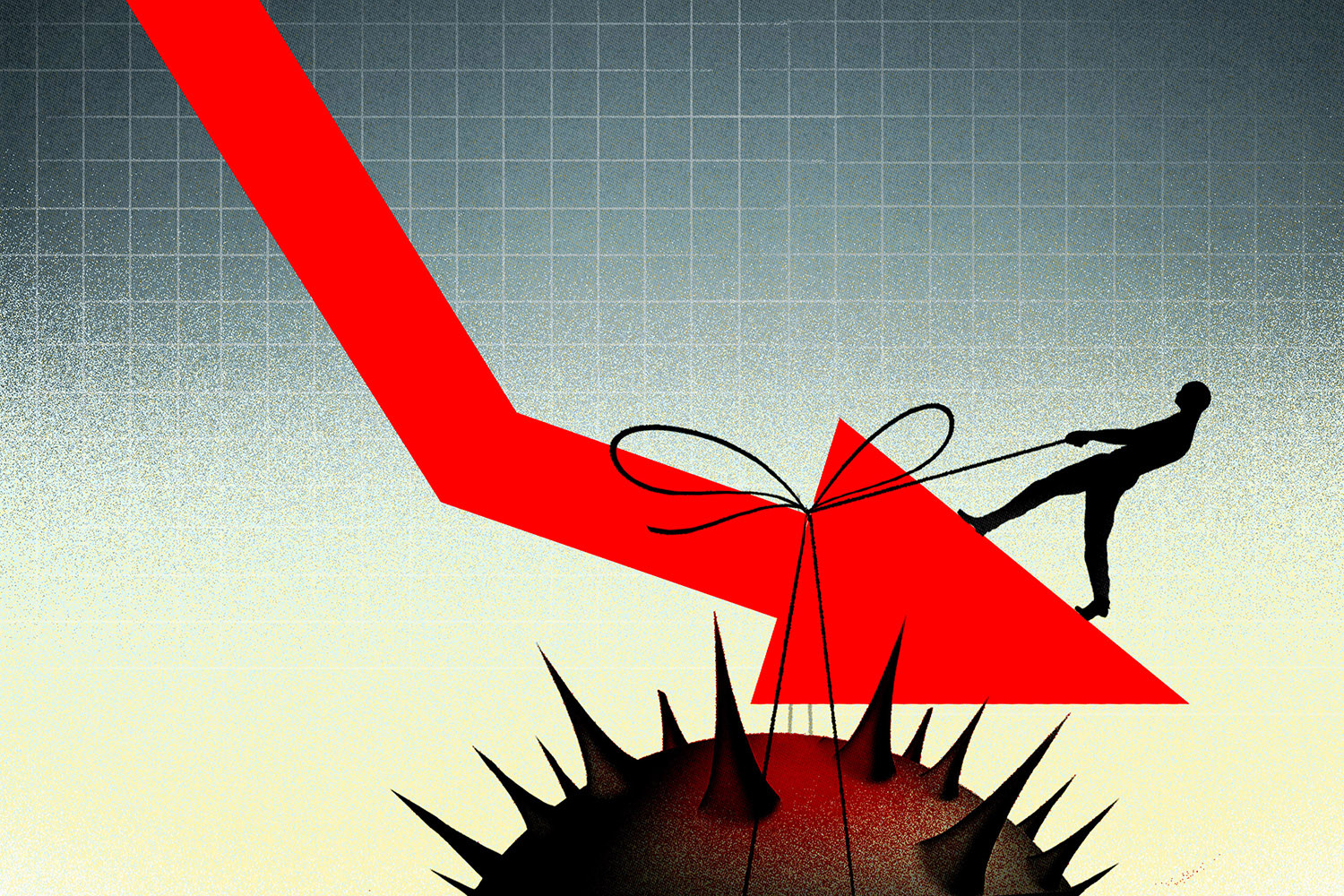Executives Can Create More Stability and Make Better Decisions if They Define What They Think Will Unfold in Set Timeframes.
Here's how to set up the COVID 19 Scenario Analysis for you company, business unit, region, functiona or team. ( The format I provided - can and should be modified to reflect your organization and industry)
1. Start With Certainty - Calendar Milestones
Covid 19 has and will continue to bring unparalled uncertainty. This void - the unknown - causes anxiety, inaction, bad risk taking and decision-making. You and your business cannot afford these now.
One of the first things we have done with clients during this pandemic is break apart generalizations like:
e.g. Our business is at risk from covid? ( yes, but what specifically is at risk?)
e.g. What will happen in the future? ( What time period are you talking about?)
e.g What will happen with our suppliers? (Which ones? and how important are they?)
into knowns and unknowns.
The Scenario Analysis helps us get pinpointed. To do this COVID Scenario analyis - we start with calendar points - we know what months and days will come next -and we bucket these into timeframes in a sped up planning cycle which yields: ( you can use any timeframes but suggest to err on shorter as the data you are receiving about the external factors impacting your business is changing daily - as you know)
- NOW (MAY - JUNE)
- NEXT (JULY- SEPT)
- NEW NORMAL (OCT+)
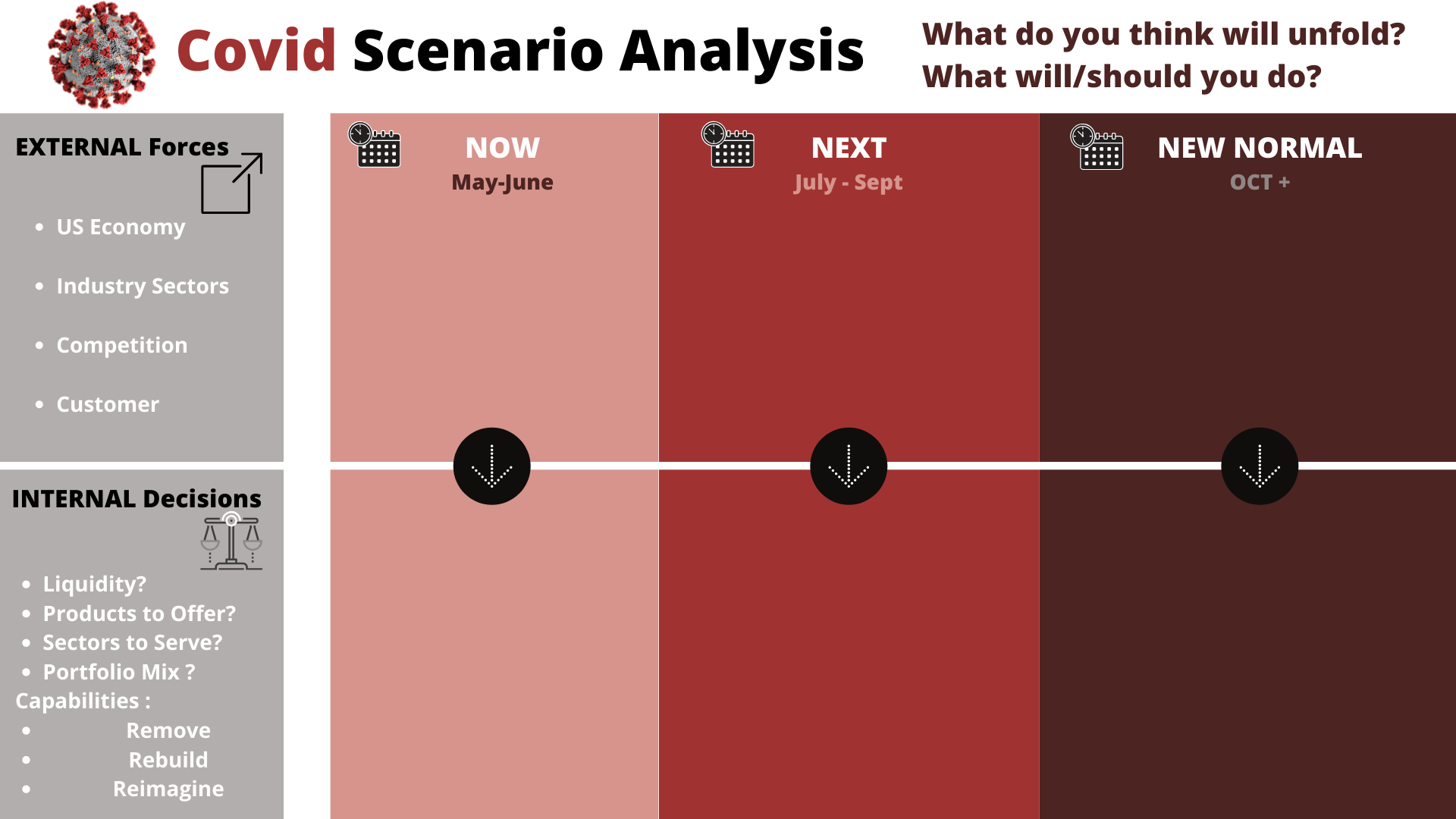
2. Define EXTERNAL Forces and INTERNAL Decision Categories
A. External forces beyond our control and those that influence your industry's SUPPLY and DEMAND -need to go here. I have listed US Economy, Industry Sectors, Competition and Customers as placeholders. You can adapt these and change them to reflect your situation.
The more specific the better ie. rather than just Industy Sectors - put - Restaurants, Airlines and Cruise Lines. Same for US Economy - you could change it to be GDP Growth % for each country you operate in.
- US ECONOMY
- INDUSTRY SECTORS
- COMPETITION
- Customers
B. For internal - list those decision levers you are being forced play or will be soon. Again, my categories are thought starters - but the more specific you are the better. A good rule of thumb is to have categories that take into account CAPITAL, PRODUCTS, MARKETS and CAPABILITIES - CPMC for short.
These levers you list are really options - decision points - you need to consider because of external forces that are or will unfold. This SCENARIO thinking - makes issues visible and helps you and your team to understand probability, impact and trends - this alone - helps to reduce anxieity - because you will - in many cases, find as many new oppotunities as risks. More options=more control.
Additionally, because a crisis is a watershed time of change - I force executives to really think through what capabilities (People, Processes, Technology, Structure) they should REMOVE (never helped anyways), REBUILD ( key to driving our advantage) or REIMAGINE ( why couldn't we do it another way).
- LIQUIDITY
- PRODUCTS to OFFER
- SECTORS to SERVE
- PORTFOLIO MIX
- CAPABILITIES TO: Remove, Rebuild or Reimagine
This completes the set up of your Covid Scenario Analysis
3. Complete the NOW, NEXT and NEW NORMAL Scenarios
To complete the scenarios " fill in" your best thinking for NOW, NEXT and NORMAL for each of the EXTERNAL Forces - be as specific as you can. It's not about certainty - its about making plausible futures visible.
- What will unfold ( EXTERNAL) during this time period?
Then looking at your EXTERNAL answers ask what are the options or implications because of this.
- What implication or impact or option do we have if this occurs?
Completing this - and dating it - and then reviewing or updating it every week - by yourself or with your team enables you as a leader to provide clearer communication to stakeholders, highlight areas to really prioritize and overall yield a more stable environment to operate in.
If you would like a working template of the COVID Scenario Analysis - just send me a short email.
Stay Well. Make Thinking Visible.
